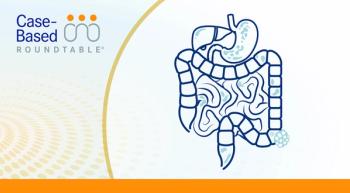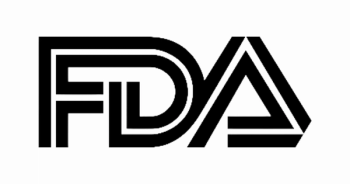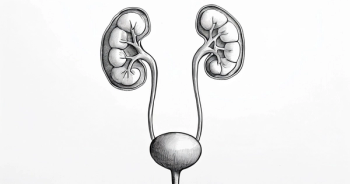
Targeted Therapies in Oncology
- February I, 2025
- Volume 14
- Issue 2
- Pages: 41
Adjuvant T-DM1 Outperforms Trastuzumab in HER2-Positive Early Breast Cancer
Key Takeaways
- T-DM1 improved OS and iDFS over trastuzumab in HER2-positive early breast cancer with residual invasive disease post-neoadjuvant therapy.
- At 8.4 years, T-DM1 showed a 13.7% absolute iDFS benefit and a 4.7% OS benefit, reducing death risk by 34%.
Ado-trastuzumab emtansine led to improved overall survival and invasive disease–free survival over trastuzumab in patients with HER2-positive early breast cancer who had residual invasive disease after neoadjuvant therapy.
After 8.4 years of follow-up, ado-trastuzumab emtansine (T-DM1; Kadcyla) led to improved overall survival (OS) and invasive disease–free survival (iDFS) over trastuzumab (Herceptin) in patients with HER2-positive early breast cancer who had residual invasive disease after neoadjuvant therapy, according to findings from the KATHERINE trial (NCT01772472) that were presented at the 2024 San Antonio Breast Cancer Symposium in Texas.
“TDM-1 is the first therapy to show an improved survival after postsurgical therapy in patients with HER2-positive early breast cancer and residual invasive disease after neoadjuvant therapy,” study author Sibylle Loibl, MD, PhD, of German Breast Group in Neu-Isenburg, the Centre for Haematology and Oncology Bethanien in Frankfurt, and Goethe University of Frankfurt, all in Germany, said in a presentation of the findings.
The trial included 1486 patients with HER2-positive early breast cancer who received a minimum of 6 cycles of chemotherapy and a minimum of 9 weeks of trastuzumab. A second HER2-targeted agent was also permitted. Patients were randomly assigned within 12 weeks of surgery in a 1:1 manner to receive 14 cycles of either T-DM1 or trastuzumab.
A total of 740 patients were treated with T-DM1, and 720 were treated with trastuzumab. At the 8.4-year follow-up mark, 521 (70.4%) and 461 (64.0%) patients in the T-DM1 and trastuzumab arms, respectively, were still alive.
Findings after 8.4 years (101 months) showed that a higher percentage of patients in the trastuzumab arm experienced an iDFS event compared with those in the T-DM1 arm at 32.3% (n = 239) and 20.3% (n = 146), respectively (HR, 0.54; 95% CI, 0.44-0.66; P < .0001). Notably, there was a 13.7% absolute iDFS benefit at 7 years.
The most common sites of first iDFS events were as follows:
• Distant recurrence: 21.5% and 14.7% in the trastuzumab and T-DM1 cohorts, respectively, including central nervous system (CNS) metastases in 5.1% and 7.0%, respectively
• Locoregional recurrence: 6.2% vs 2.2%
• Contralateral breast cancer: 2.6% vs 0.9%
• Death without prior event: 1.9% in both arms
Most patients went on to receive 1 or more treatments after experiencing an iDFS event. Most commonly, they were HER2- directed therapies, platinum compounds, taxanes, and capecitabine. These findings further support the promising findings of KATHERINE that were observed years ago.
“Five years back in 2018, the interim analysis for the iDFS was presented at the San Antonio Breast Cancer Symposium [and] demonstrated a large and clinically meaningful and statistically significant benefit for T-DM1 over trastuzumab to the HR of 4.5 and still highly statistically significant P value of 0.01, with a 3-year iDFS of 77%. That was an absolute difference of 11%. At that time, with a short follow-up, overall survival was immature and the HR was 0.7. And the P value [of] 0.08 did not meet the prespecific boundary,” Loibl said.
More mature OS data now favor T-DM1 at the 8.4-year mark, with a total of 89 patients (12%) experiencing an OS event in the T-DM1 arm compared with 126 (17.5%) in the trastuzumab arm (HR, 0.66; 95% CI, 0.51-0.87; P = .0027). Loibl explained that T-DM1 led to an absolute OS benefit of 4.7% at 7 years, with a 34% significant reduction in the risk of death.
The causes of death were breast cancer (9.5% in the T-DM1 cohort vs 15% in the trastuzumab cohort), adverse event (AE; 0.1% vs 0%), and other reason (2.4% vs 2.5%).
No new safety signals emerged with longer follow-ups from the KATHERINE trial. Twenty-four patients (3.2%) and 12 patients (1.7%) in the T-DM1 and trastuzumab cohorts, respectively, experienced any-grade AEs, including cardiac disorders (0.7% in each arm), nervous system disorders (0.5% vs 0% in the T-DM1 and trastuzumab arms, respectively), and hepatobiliary disorders (0.3% vs 0%).
Serious AEs occurred in 0.3% (n = 2) and 0.6% (n = 4) of patients in the T-DM1 and trastuzumab groups, respectively. They were cardiac disorders (0% vs 0.4%, respectively), hepatobiliary disorders (0.3% vs 0%), and vascular disorders (0 vs 0.1%).








































